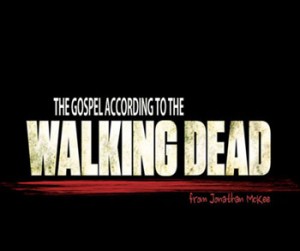I encourage you all not to let this date pass by unnoticed—Tuesday, January 22, 2013.
It marks the 40th anniversary of Roe Versus Wade, the landmark decision by the Supreme Court that effectually makes abortion legal in the USA.
Since the case’s decision in 1973, roughly 50 million abortions have taken place legally in America. That’s about 1.2 million abortions last year alone.
Let that number sink in—more than a million per year. Picture all the American cities you know with a population of about a million people. Portland. San Diego. Philadelphia. Dallas.
Each year, one of those cities is wiped out.
What might you do with this information?
1. Know that this decision affects you.
These days, about 4 out of every unintended 10 pregnancies end in abortion (that’s about 22 percent of pregnancies overall, excluding miscarriages). Chances are good that you know someone who has had an abortion. So one of the first—and most immediate—decisions you face is how you treat her. With condemnation? Or with support?
When I was in graduate school I was friends with a girl I’ll call Sally. She had it all—hair, smile, tan—enough to keep a squad of poets busy for weeks.
One day we went to the beach, and she said there was a secret that she needed to tell somebody. Her parents were out of the question. Her current boyfriend was away. I was her next choice.
Something had been inside her body, she said. About a month earlier, her hips began to mature. She had become queasy. She went to a playground one day just to look around and wonder—and she liked what she saw.
But not now, not then, she said. There was no money to raise a child by herself. College wasn’t finished, and she didn’t want to go live with her parents and work as a checker at night to pay the bills.
So Sally decided to terminate her pregnancy. Outside the clinic someone yelled at her: “Fornicators go to hell.” One demonstrator coached his little girl to say “Mommy?” as Sally walked inside.
“That kid is going to grow up messed up,” Sally told me.
When the abortion was over she joined other women eating crackers and drinking Gatorade in the clinic. Then she got really sick and threw up a lot.
That was all.
At the beach Sally watched the ocean with a long, faraway look in her eyes. I hugged her and meant it in the best possible way. Because she smoked I shared a cigarette with her, simply to let her know she was a friend and not alone in the world.
And when I drove back to my apartment I ached an unfathomable pain.
2. You should feel somber—whatever camp you fall in.
Fast forward two decades and meet my newest daughter. As I mentioned in this blog a few weeks back, my wife is pregnant again. The child’s due date is at the end of April.
At 26 weeks past conception, our daughter won’t meet my wife and me face to face for another three months. But there are some unmistakable facts about her already.
She weighs about two pounds and is viewed well through ultrasounds. She can hiccup and sleep and stretch and bat her fists around. Books tell us she can hear and feel.
My niece was born prematurely at about the same stage my daughter is now, just before the start of the 3rd trimester. Today my niece is a perfectly functioning 13-year-old.
Also at 26 weeks, if we wanted to, my wife and I could legally end our daughter’s life. It would be deemed a “later-term” abortion, and it would be controversial. Some States ban it, but others don’t. Some countries like China, Vietnam, and our neighbor to the north, Canada, have no legal limit on when an abortion can be performed.
Bottom line: we could get it done. We could legally end our daughter’s life.
I hope that reality never gets too old to discuss.
And I hope—whatever camp we fall into—that reality makes us somber.
3. Know that no matter what camp you fall in, the issue is more complex than a one-line slogan.
Truly, much of the pro-life/pro-choice debate is a false dichotomy—meaning that if people fall into the “pro-life” camp, they’re not actually “against choice.” And if people are “pro-choice,” they’re not actually “for abortion.”
So, what would happen if a new camp were created, one that didn’t accuse the other side of being for abortion or against choice? Maybe if we stopped yelling at each other all the time, we could come together and press for real solutions.
A few years back when I worked as a reporter, I interviewed a chief official from our State’s branch of NARAL—a predominant pro-choice organization. I asked her, a gracious and well-educated woman, if being pro-choice was the same thing as being in favor of abortion.
“Heavens no,” she said. “Abortion is a horrible thing. We simply want to keep it safe and legal.”
Did you catch that? And did you catch who said it?
No one’s actually for abortion. No one, not even the head of NARAL, goes around saying, “You know, abortions are great, and every woman should get one.”
So let’s agree on this.
Abortion—even safe and legal abortion—is a horrible thing.
And let’s continue the discussion from there.
4. You should take a stand.
There’s a ton of room for debate surrounding this issue, and I welcome all your thoughts in the comments section below.
Yet I, for one, don’t want to just end this article by saying that more debate is the only answer. Sure, abortion is complicated. But, yes, there are solutions. The solutions affect more than how we vote. They affect how we treat people. They affect the decisions we make ourselves.
Here’s one solution.
Fewer abortions. More adoptions.
Here’s another solution.
Better use of birth control in the first place.
Here’s a third.
If you’ve read my blog for awhile, you know I’m a man of faith. I talk about it openly, and I also welcome anybody from any perspective to read this blog, because plenty of people with other belief systems frequent here, and I’m fine with that.
Here’s what I do. I pray a big-time prayer that abortions in America would diminish.
The prayer is that bold. It’s that blatant.
And I invite you to do the same.
Question: Talk about solutions. What can be done?











